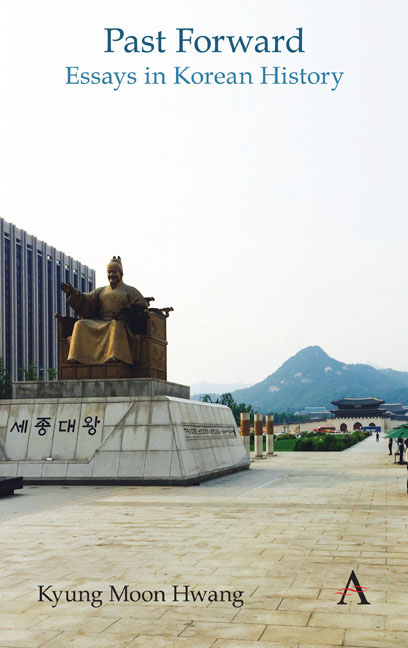Book contents
- Frontmatter
- Contents
- List of Figures
- Foreword
- Chronologies of Korean History
- Themes
- Acknowledgments
- Note on Romanization and Spelling
- Part I Circulating History
- Part II Durable Traditions
- Part III Ancient Remains
- Part IV Dynastic Depths
- Part V Modern Origins
- Part VI Challenges of Nationhood
- Part VII History Makers
- Part VIII External Presences
- 52 Korea's Complicated Relationship with China
- 53 How Chinese was Chinese History?
- 54 Tiananmen and the Power of History
- 55 Lotte between Korea and Japan
- 56 Comfort Women Beholden to History
- 57 A Modest Proposal for Dokdo
- 58 The General Sherman Incident of 1866
- 59 Depictions of the United States
- 60 Overcoming Old Views of Korea–United States Ties
- 61 Foreign Language Dependency
- Part IX Trials of Modernization
- Part X Gripped by the Past
- Index
55 - Lotte between Korea and Japan
from Part VIII - External Presences
- Frontmatter
- Contents
- List of Figures
- Foreword
- Chronologies of Korean History
- Themes
- Acknowledgments
- Note on Romanization and Spelling
- Part I Circulating History
- Part II Durable Traditions
- Part III Ancient Remains
- Part IV Dynastic Depths
- Part V Modern Origins
- Part VI Challenges of Nationhood
- Part VII History Makers
- Part VIII External Presences
- 52 Korea's Complicated Relationship with China
- 53 How Chinese was Chinese History?
- 54 Tiananmen and the Power of History
- 55 Lotte between Korea and Japan
- 56 Comfort Women Beholden to History
- 57 A Modest Proposal for Dokdo
- 58 The General Sherman Incident of 1866
- 59 Depictions of the United States
- 60 Overcoming Old Views of Korea–United States Ties
- 61 Foreign Language Dependency
- Part IX Trials of Modernization
- Part X Gripped by the Past
- Index
Summary
The arrest in 2016 of the oldest daughter of the Lotte Group's founder for suspected bribery and other misdeeds represented the latest chapter in the ongoing saga of South Korea's fifth-largest conglomerate company, or chaebol. Over the years, it seems most of the major chaebol that dominate the South Korean economy—such as Hyundai, Samsung and Hanjin—have passed through very public struggles among the ruling family members, as if they were staging a television drama from the dynastic past.
Indeed Lotte's aging founder, Shin Kyuk-ho, must have felt like Yi Seonggye, the founder of the Joseon dynasty, who abdicated in the face of murderous infighting over the throne among his children. Lotte's place in modern Korea carries powerful historical overtones in other ways as well, including the complex hold of traditional family practices and Japan's prominent role in South Korea's economic development.
The story begins in Ulsan, the home region of Shin Kyuk-ho, in the closing years of the Japanese colonial period (1910–1945), when the peninsula was caught in the throes of Japan's war against China and the United States. Back then, Ulsan was not the powerhouse center of industry as it is now, so Shin made his way to nearby Busan, the growing gateway to and, in many ways, product of Japan, in order to attend high school. Upon graduation, he moved to Tokyo to attend Waseda University, somehow avoiding conscription into the battlefront as a student soldier.
This was also when Shin's first daughter, Yeong-ja, was born, with a familiar name for that generation of Korean females, given that it could easily be rendered into a common Japanese name as well. Upon Korea's liberation in 1945, Shin stayed in Japan, joining hundreds of thousands of Koreans who, for whatever reason, made that difficult choice.
He began his company in the late 1940s and chose the name “Lotte” in reference to the love interest (“Charlotte”) of Werther, the anxious young protagonist in the famed novel by Goethe. This unusual name for a company thus reflected Japan's outsized role in absorbing and transmitting the globalizing currents of Western culture in the early twentieth century throughout East Asia, including of course in its colony of Korea.
- Type
- Chapter
- Information
- Past ForwardEssays in Korean History, pp. 161 - 163Publisher: Anthem PressPrint publication year: 2019



